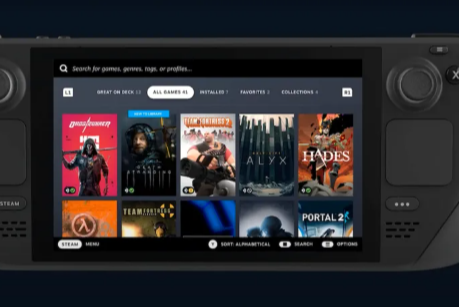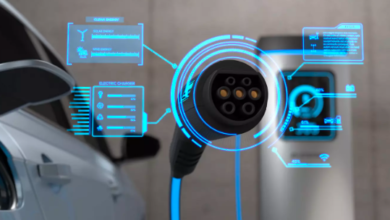How to set Up a YUZU Emulator on low End PCS

Yuzu has completely changed the way we experience Nintendo Switch games on PC. For gamers with high-end machines, setting up Yuzu is often a plug-and-play experience. But what if you’re working with a low-end PC? Is smooth gameplay still possible? Absolutely. With the right tweaks, settings, and resources, you can transform even a modest setup into a capable Switch emulator.
In this guide, we’ll walk through everything you need to know, from downloading Yuzu to optimizing it for your hardware, and even where to download switch roms safely to get started.
Why Yuzu is the Best Choice for Emulating Nintendo Switch Games
There are several Switch emulators available today, but Yuzu stands out for its performance, compatibility, and active development community. It supports a large library of games, offers both OpenGL and Vulkan rendering options, and constantly receives updates that boost performance.
For low-end PC users, Yuzu’s flexibility is its biggest advantage. With the right configuration, you can achieve playable frame rates without sacrificing too much visual quality.
Minimum and Recommended Specs for Low-End Systems
While Yuzu doesn’t demand a monster rig, knowing the baseline requirements will help you understand where your PC stands.
Minimum Specs for Playable Performance:
CPU: Intel Core i3 (4th Gen or newer) or AMD equivalent
GPU: Integrated Intel HD 530 / AMD Vega 3 or higher
RAM: 8GB
Storage: SSD recommended for faster load times
OS: Windows 10/11 64-bit
Tip: If you’re using integrated graphics, Vulkan mode is usually better for performance compared to OpenGL.
Step 1: Downloading and Installing Yuzu
1. Visit the official Yuzu website and download the latest version of the emulator.
2. Extract the downloaded files and run the installer.
3. Once installed, open Yuzu and go to `File > Open Yuzu Folder` to set up your directory structure.
4. Place your Switch firmware files in the `nand` directory (these are required for most games to run).
Note: Firmware files should be dumped from your own Nintendo Switch to remain legal.
Step 2: Download Switch ROMs
Once Yuzu is installed, you’ll need games in the `.XCI` or `.NSP` format. This is where SwitchRomz comes, where you can download switch roms. It’s your one-stop hub for a wide variety of Switch titles in formats optimized for Yuzu.
You can also find game roms that are specifically tested for emulator compatibility, saving you time and frustration.
Step 3: Configuring Yuzu for Low-End PCs
Here’s where the magic happens. These tweaks can make a world of difference for low-spec hardware:
1. Use Vulkan as the Graphics Backend
Go to `Emulation > Configure > Graphics`.
Set API to Vulkan.
Enable asynchronous GPU emulation to prevent stutters.
2. Lower Internal Resolution
* Set resolution scaling to 0.75x or even 0.5x for very low-end machines.
Lower resolutions mean faster rendering, although visuals will be slightly blurrier.
3. Enable Multicore CPU Emulation
Under `CPU`, make sure multicore emulation is turned on.
This allows Yuzu to distribute workload across multiple cores.
Read Also: Technology, Talent, and Trust: Building Businesses in the Digital Era
4. Turn Off VSync
Disabling vertical sync can help reduce input lag and improve FPS, though you may see screen tearing.
5. Use the Disk Shader Cache
Make sure shader cache is enabled in settings to reduce in-game stuttering after initial loads.
Step 4: Controller Setup
Yuzu supports multiple controller configurations:
Official Nintendo Switch Pro Controller
Xbox One/Series Controllers
DualShock/DualSense controllers
For the best experience, use a wired connection to reduce latency.
Step 5: Testing and Fine-Tuning
No two low-end PCs are exactly the same, so you’ll want to test and adjust:
1. Load a lightweight game first (like indie or 2D titles).
2. Check FPS and adjust resolution scaling or graphical settings accordingly.
3. Save your settings as game-specific profiles for easy switching.
Additional Performance Tips
Close background apps before running Yuzu. Even browsers can eat up valuable RAM and CPU resources.
Keep GPU drivers updated, performance improvements often come from driver-level optimizations.
Use an SSD for your games if possible. It reduces loading times and texture pop-ins.
Why ROM Optimization Matters
Not all ROMs are created equal. Using well-dumped, clean ROMs can significantly improve stability. That’s why switch roms for yuzu are a great choice — they’re curated for compatibility, so you can spend more time gaming and less time troubleshooting.
Final Thoughts
Setting up Yuzu on a low-end PC isn’t just possible; it can be surprisingly enjoyable if you know how to tweak your settings. The combination of Vulkan rendering, reduced resolution scaling, and properly optimized ROMs will get you the smoothest experience possible given your hardware.
With the right adjustments and reliable resources like SwitchRomz, you can enjoy your favorite Nintendo Switch titles without having to invest in expensive hardware.




